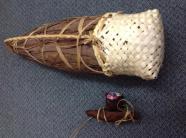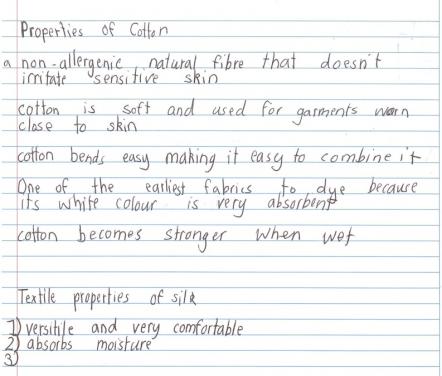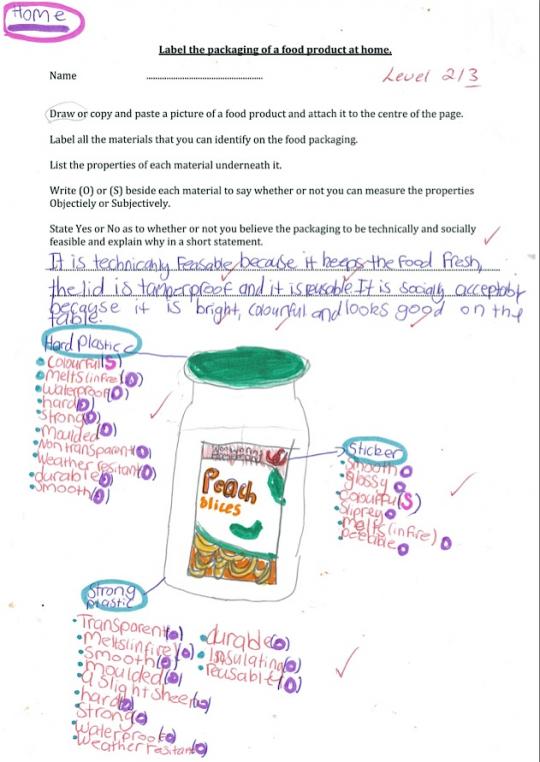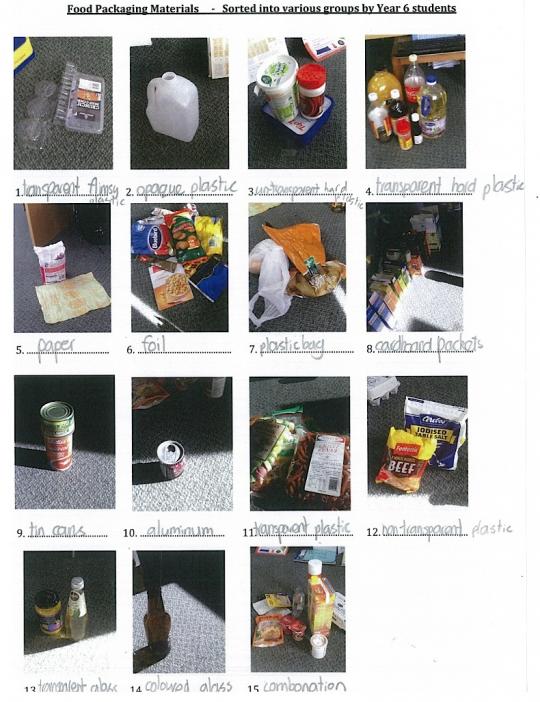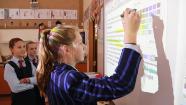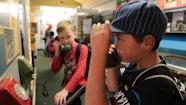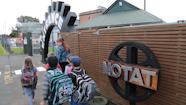Exploring food packaging
Teaching inquiry
How can I develop understandings of some of the indicators in the technological products components in an integrated unit on food and food packaging for my year 6 class?
Strategy
Dorothy Hutton planned to introduce understandings of some of the indicators in the technological products component at level 1 and 2 and aspects of level 3 within a unit that also had a focus on food and food packaging. The unit also integrated chemistry (science) and healthy eating (health and physical education).
Materials unit plan version one (Word, 117 KB)
The school has an implementation plan for their local school technology curriculum (see the case study Tracking coverage and learning across a school) and technological products was the planned focus for term 3.
Select the headings below to read more.
Evidence of students' understandings
The students' written work was kept in a workbook.
Other activities included exploring and recording understandings of materials and performance properties and researching materials in traditional Māori products of the past.
Student writing: The properties of cotton (PDF, 318 KB)
The students took notes on discussions of the properties of materials that can be measured objectively and subjectively.
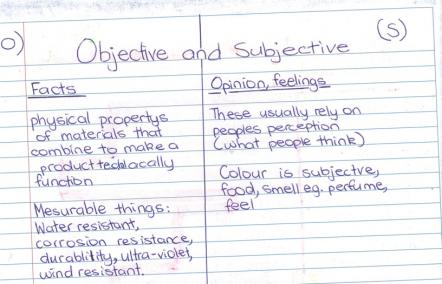
Student writing: Objective and subjective (PDF, 415 KB)
The students were asked to locate a food package from home and record information about its materials and their properties.
To assess whether the students could transfer their understandings to an unknown product, they repeated the same worksheet in the class using an unknown example. This time, the product featured was the same for every student to make it easier to assess. The container used offered different types of material with a variety of performance properties.
Outcomes
Dorothy used the unknown product worksheet as summative assessment evidence to begin making judgments of students’ levels of understanding against some of the level 1–3 indicators for technological products. The teaching had focused on some of the indicators in technological products, in particular:
Level 1 |
|
level 2 |
|
level 3 |
|
Based on their worksheets and overall teacher judgments, Dorothy believes the students did reach level 2–3 understandings for these indicators.
This evidence also helped Dorothy to determine coverage of curriculum components for the school’s project on tracking technology coverage of the Technology learning area (see Tracking coverage and learning across a school).
What next?
The next unit the students are completing is on hats. Dorothy is planning to make links for students to the technological products understandings that they developed in this unit. Her questioning could include – What are the hats made of and why?
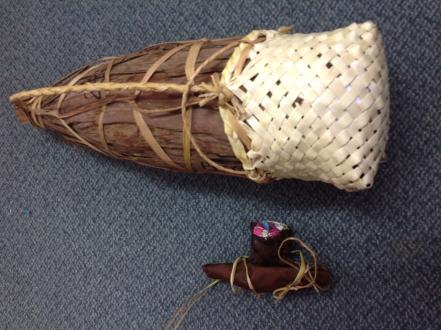
Materials for papier-mâché gumboots
The students had recently made papier-mâché gumboots for the spring service. Dorothy started the teaching by providing links to this work and discussing with the students the materials they had used in their gumboots – flour, paper, paint, and polyurethane.
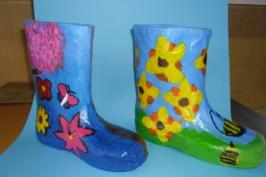
She introduced the vocabulary of the technological products component and asked the children questions exploring understandings at level 1 technological products:
- What materials were the gumboots made from?
- Why did we use each of these materials?
- What are the performance properties of paper, flour paste, paint, and polyurethane?
Pre-European Māori materials
Dorothy also used material from a unit on mask making developed by Christine Elder from South Otago Junior Technology Centre.
In particular, she found the presentation on pre-European Māori technology useful to introduce understandings of materials and their properties from a cultural and historical perspective.
Pre European Māori technology (PDF, 2 MB)
Tītī storage
The father of one of the students (Tony Ballantyne) had previously worked with experts to produce information for educational purposes on tītī/muttonbird storage. A video is available on tītī storage, see Pōhā – Ngā Tahu mahinga kai.
Tony visited the class, bringing pōhā (traditional packaging to store tītī) with him.
The students being able to look and feel real pōhā made it really come alive for them!
Dorothy Hutton
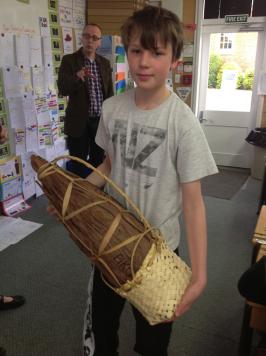
Tony explained that the pōhā could hold 23 mutton-birds – “imagine taking that to trade,” he said.
Captivated by his visit and stories, the students carried out a small re-enactment of trading the mutton-birds. When they were carrying the pōhā, the students found that the strap was uncomfortable but very strong. This led to rich discussions about the materials the pōhā was made from and the materials in their environment today that are used for packaging and carrying foodstuffs.
Tony also showed the students the kelp bag that goes inside the outer woven basket of the pōhā. The kelp is split and expanded to form a small pocket that the tītī are then packed into.
New milk bottle packaging
The new Anchor milk bottle provided stimulus for a discussion on the performance properties of materials. The students’ comments included the following:
Year 6 students
- It is annoying that you can’t see how much milk is in the bottle.
- It costs more.
- If it is so important for a milk product to be in a container that is light proof – what about yoghurt and other milk products?
- The milk we have is in a clear container so why don’t they put all milk products in clear containers?
- Milk turns over pretty fast in our house – a 2-litre bottle of milk only lasts a day or so … so what’s the point?
Some of the articles Dorothy used for reference on the milk bottle include:
Sorting packaging materials
Dorothy brought in a range of packaging materials and told the students they were going to sort them into categories. The students established several categories but these were revisited as they sorted the items.
There were 75 items. Students each chose three and placed each item in one of the growing number of categories. The students explained why they had chosen the categories for their items, focusing on the predominant packaging material. The students were able to agree or disagree, and discuss their decisions.
The categories included, hard plastic, soft plastic, transparent, opaque. Prompted by teacher questioning and input, the students moved some items to different categories and renamed categories based on their new understandings.
Once physical regrouping and renaming had occurred, each category was photographed. The teacher created a sheet with the identified categories and their names for each student. There were 15 categories by the end of the activity.
Food packaging materials groupings (PDF, 535 KB)
The class then brainstormed what the performance properties of each group were.
Technically feasible and socially acceptable?
To introduce the concepts of technically feasible and socially acceptable, Dorothy showed the students a presentation developed by Christine Elder from South Otago Junior Technology Centre.
See, the level 3 indicators of progression for technological products. (Scroll to the bottom of the page for the indicators of progression.)
Technically feasible and socially acceptable (PowerPoint 2007, 1 MB)
The students discussed the food products that they had sorted earlier and agreed that all of the packaging was technically feasible because the products were available on the supermarket shelves to purchase and safe to consume when packaged and stored in the correct manner.
Their discussions about social acceptability raised questions such as “Is it socially acceptable to have tomato sauce in a bottle on the table?”
Dorothy considered these to be very introductory discussions and could see that further work would be needed to develop understandings to meet the level 3 indicator for technological products.
Food packaging materials worksheet (Word 2007, 5 MB)
Reflection
Dorothy noted that one of her worksheets asked students to consider and describe the technical feasibility and the social acceptability of a product separately. Realising that the indicator requires students to combine these understandings, she plans to rephrase these questions in the worksheet.
Related videos
Growing knowledge beyond students' practice (02:27)
Claire Wood and a year 8 student talk about unpacking examples of technologists' practice to grow curriculum understandings.
Technological experiences (02.27)
Cheryl Pym describes the power of providing authentic experiences to engage students.
Technological experiences at Motat (03:06)
Moira Patterson and Naomi Laycock show the importance of engaging students in hands-on experiences.

